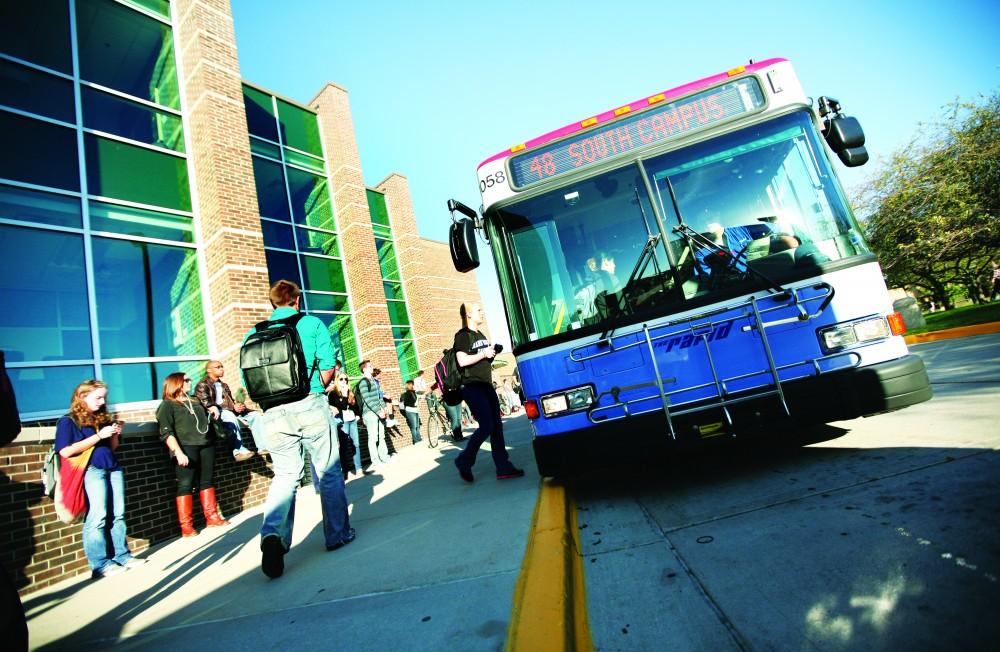Rapid ridership numbers steadily increase

GVL / Robert Mathews Students entering a 48 at kirkhof.
Sep 26, 2012
About 10.8 million riders. That’s how many rides the Rapid had transported as of 2011—a new record for the public transportation system.
When the Rapid started out 10 years ago, the ridership numbers were only at 4.6 million.
One of the reasons for such a huge increase in riders over the years is the improvements the Rapid has implemented and the route changes that have taken place. At Grand Valley State University alone, it changed Route 50 to go to Rapid Central Station every weekday. More connectivity equals increased ridership numbers for the buses.
And increased, it has. For the first three weeks of school, total GVSU ridership rose from 279,726 in 2011 to 310,541 in 2012. The Campus Connecter has shown a 10 percent increase since fall 2011, and while other off-campus routes have shown a slight decrease, the total numbers have only continued to rise.
At the end of the 2011-2012 school year, the Rapid noted that it gave about 40,000 more rides to GVSU riders than it did in 2010-2011.
“Riding the bus is part of the culture at GVSU and this is directly reflected in our continued growth,” said Mark Rambo, Pew Campus operations manager.
There are no signs of the ridership numbers decreasing anytime soon, either.
“This year, we are hoping to break 3,000,000 rides,” Rambo said.
Starting in 1996 with a mere few hundred rides to now in 2012 with almost 3,000,000, according to growth charts of ridership numbers, the Rapid has indeed grown rapidly. A contributing factor to this is the student body of GVSU.
“Our student body understands and embraces sustainable transportation,” Rambo said.
The university pushes to be environmentally friendly in every way possible, and that message has grown to affect and contribute to the success of the Rapid bus system.





















